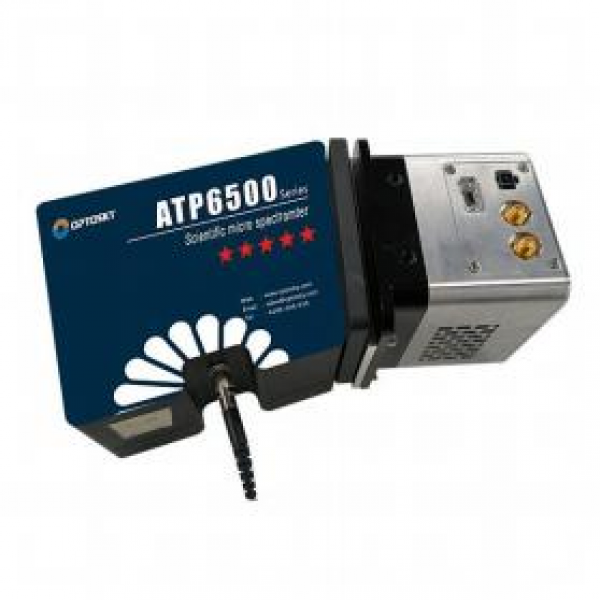ATP6500DC and ATP6500EM are self-developed deep cooling scientific-grade spectrometer by Optosky, with deep cooling detector -70℃ or EMCCD detector - 100℃, excellent performance, the both CCD have the largest dynamic range, and using semiconductor cooling technology, reduce working dark current, thus greatly reducing the detector noise, obtain excellent signal to noise ratio, and improve the reliability of measurement, the measurement results do not change with the ambient temperature.
ATP6500DC and ATP6500EM can receive lights via SMA905 connector or free space, and output spectral data via USB2.0/UART.
Type | Features |
ATP6500DC | Deep cooling down to -70℃ , 2048X264pixels |
ATP6500EM | EMCCD deep cooling down to -100℃ , 1600X200pixels, fit to weak light analysis |
| Detector | |
| Detector cooling temperature | ATP6500DC: -70℃ ATP6500EM: -100℃ |
| Detector type | ATP6500DC: Deep cooling back-thinned CCD ATP6500EM: Deep cooling EMCCD |
| Spectral range | 180-1100 nm |
| Effective pixels | ATP6500DC: 2048×264pixels ATP6500EM: 1600×200pixels |
| Pixels dimension | ATP6500DC: 15μm×15μm ATP6500EM: 16μm×16μm |
| Full well capacity | ATP6500DC: ~600 Ke- ATP6500EM: Normal:300,000 e - EM:1,300,000 e |
| Dark noise | ATP6500DC: <5e- ATP6500EM: Normal:<2.8 e - EM:< 1 e |
| Optical parameter | |
| Focal distance | 98 mm for incidence / 107mm for output |
| Optical resolution | ATP6500DC: 0.01-1.3nm ATP6500EM: 0.08-0.9 nm (decide on slit size, spectral range) |
| Incident Interface | SMA905 connector,free space |
| Signal-to-noise | >1000:1 |
| Working temperature | -10 to +45℃ |
| Working humidity | < 90%RH |
| Wavelength range | 180-1100nm |
| Slit Size | 5, 10, 25, 50, 100, 150, 200 μm optional |
| Optical Design | F/4 crossed Czerny-Turner |
| Physical parameters | |
| Dimensions | ATP6500DC: 254×130×82 mm ATP6500EM: 354×160×115 mm |
| Weight | ATP6500DC: 1.85Kg ATP6500EM: 3.85Kg |
| Electrical parameter | |
| A/D conversion resolution | 16 bit |
| Power consumption | ATP6500DC: 50W ATP6500EM: <100W |
| Integration time | 8ms - 1.3hrs |
| Interface | USB 2.0 or UART |
| Supply voltage | ATP6500DC: DC 12V±10% ATP6500EM: 100-240V AC |
- Integration time: 8ms ~ 1.3 hours.
- CCD or EMCCD.
- Quantum efficiency > 90%.
- CCD parameters: 1024×64 pixels or 2048×128.
- Ultra-low noise, ultra-high signal-to-noise ratio.
- Ultra-low dark current, Ultra-high dynamic range.
- Spectral range: 180- 1100nm(depend on spectral range, slit size.
- Spectral resolution: 0.01-4nm(depend on spectral range, slit size).
- Optical path: crossed Czerny-Turner (C-T).
- Entrance connector: SMA905 connector or free space.
- Output interface: high speed USB2.0 or UART.
- Scientific research
- Weak(Biological) fluorescence measurement
- Raman spectrometer
- Transmittance measurement, reflectance measurement
- UCP








